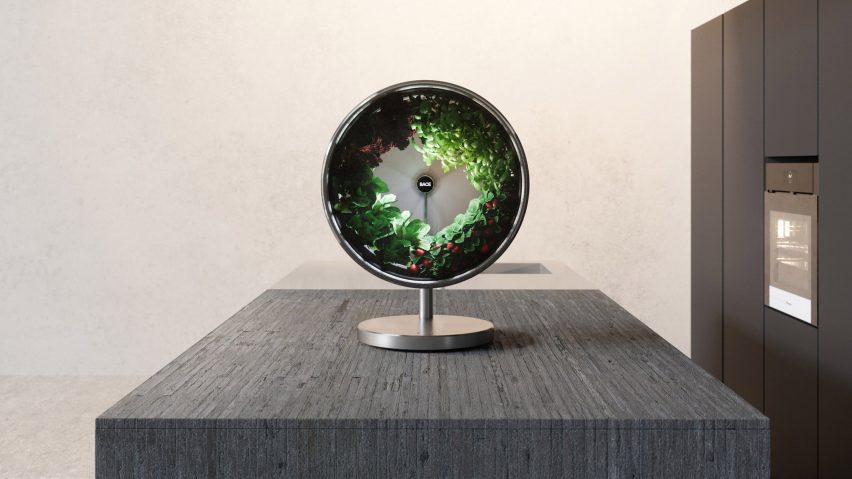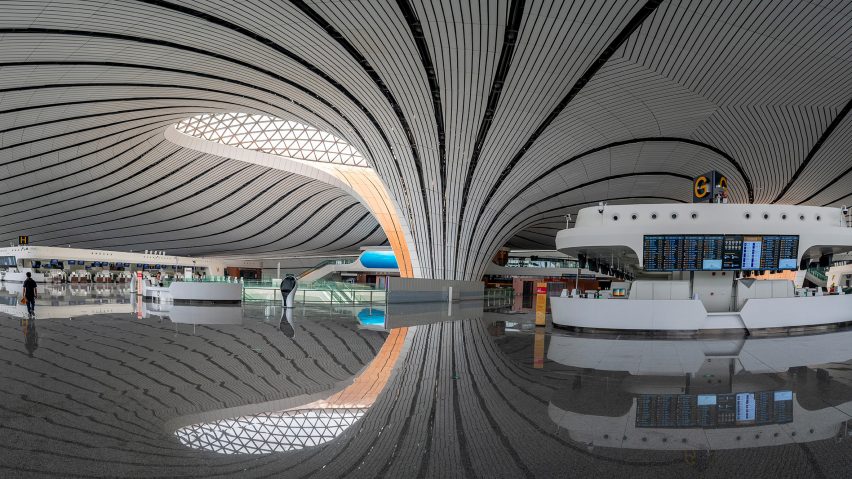
This week, pictures were revealed of two major soon-to-open projects by Zaha Hadid Architects
This week on Dezeen, 360-degree images of the interior of Zaha Hadid Architects' Beijing Daxing International Airport were revealed, and the firm's Opus hotel in Dubai was shown nearing completion.
Chinese media organisation CGTN unveiled 360-degree photography of the inside of Zaha Hadid Architects' airport terminal building in Beijing this week, which is set to open on 30 September 2019.
At 700,000 square-metres, the airport terminal building will become one of the largest in the world, designed to handle up to 45 million passengers a year, with plans to increase its capacity to 72 million passengers by 2025.
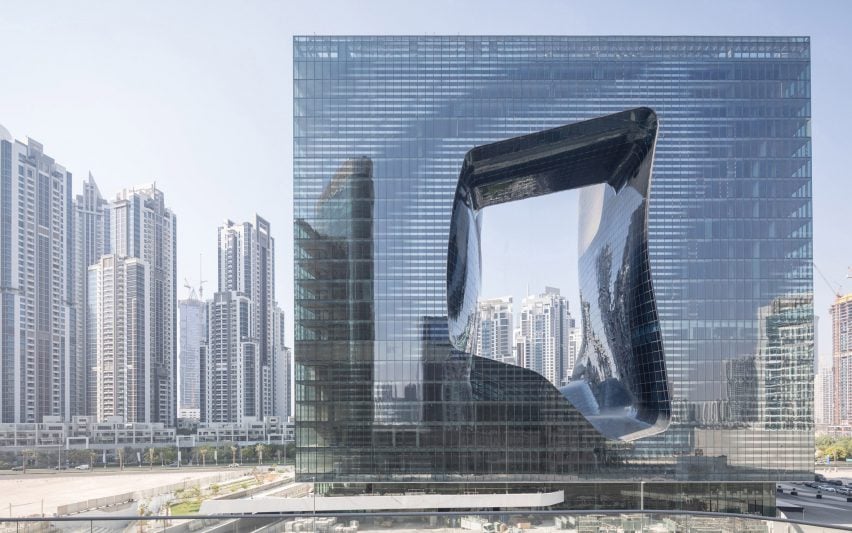
Images were revealed this week of another of Zaha Hadid Architects' projects, the Opus hotel in Dubai, whis is also nearing completion.
Scheduled to open in 2020, the mixed-use building set in the Burj Khalifa district is formed of conjoined towers with a irregular void in the middle.
It will be Dubai's only building that has both the interior and exterior designed by the late Zaha Hadid.
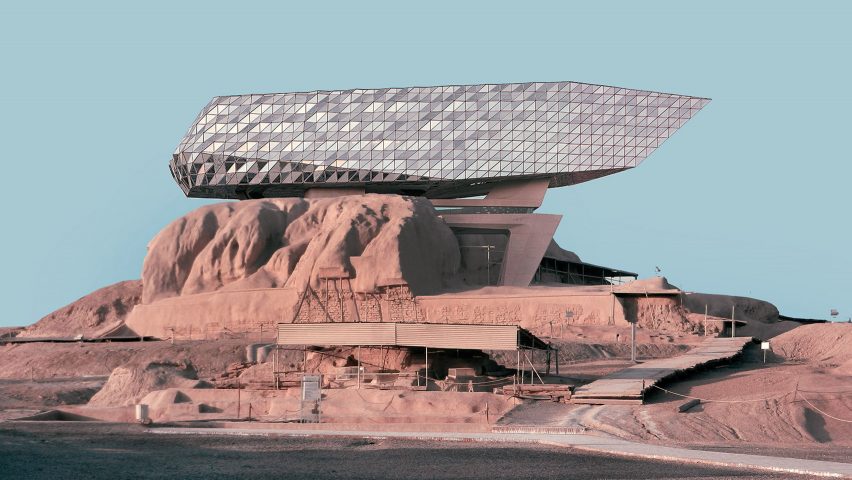
The famous architect's work was also featured in a conceptual project this week, which saw fellow architect Mohammad Hassan Forouzanfar create photomontages that combine archaeological sites in Iran with contemporary buildings.
Zaha Hadid Architects' Port House fire station extension is envisioned cantilevering over Tepe Sialk, an ancient archaeological site in Kashan, while Foster + Partners' glazed-box-like Hangzhou Apple Store is seen to protect the remains of Takht-e-jamshid in Fars.
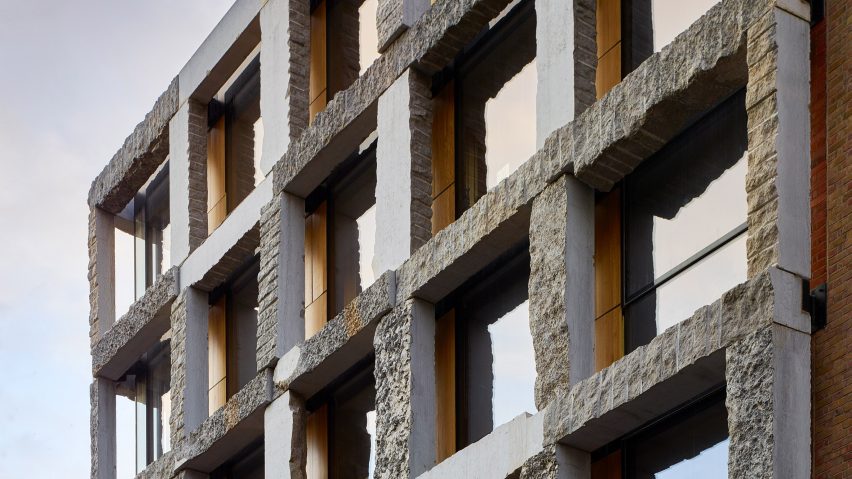
In the UK, 15 Clerkenwell Close hit the architecture headlines again this week as Amin Taha won his "painful" battle against Islington Council appealing against the building's demolition.
After being served a demolition order back in September 2018, following a dispute over the building's facade, a report from the planning office was released yesterday stating that 15 Clerkenwell Close does not need to be taken down.
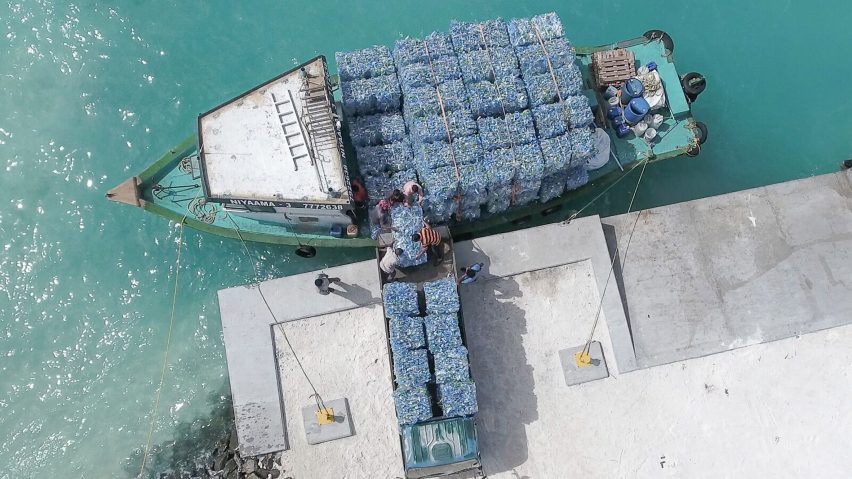
From saving buildings to saving the seas, Parley for the Oceans founder Cyrill Gutsch told Dezeen this week in an exclusive interview that he doesn't believe we're going to clean up the oceans.
According to Gutsch, eliminating plastic from the seas – with projects such as The Ocean Cleanup – is not possible despite the best intentions. Instead, the solution is to develop non-harmful alternatives to plastic from natural materials like algae or fungi.
A countertop hydroponic garden was also popular with readers this week. The Rotofarm indoor veggie patch by Bace works without soil, instead using mess-free nutrient and water reservoirs to feed its plants.
Unlike ordinary hydroponic systems, Rotofarm rotates to turn in a full circle every hour – this is designed to accelerate the plant's growth as much as twice over.
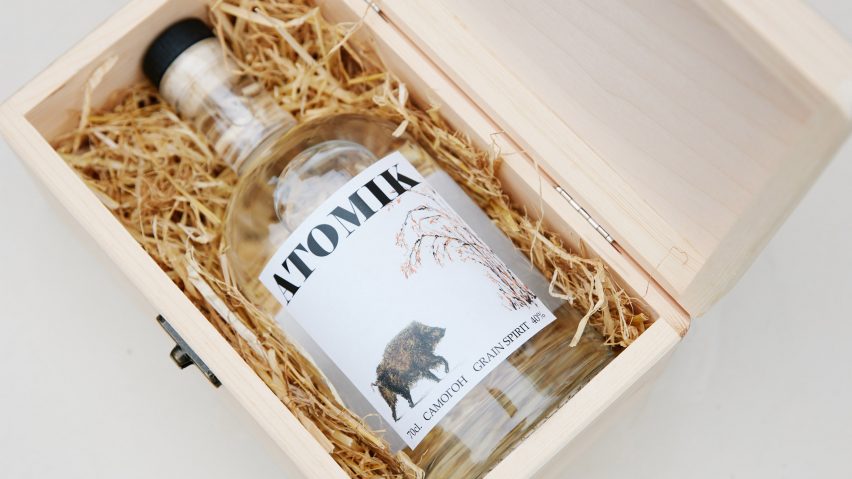
Scientists also found a way of utilising home-grown crops, by creating a brand of artisanal vodka from rye grown on land in Ukraine that has been abandoned since the Chernobyl nuclear disaster.
Its developers hope to use the Atomik vodka to help people living in the area, by showing that alcohol made from crops grown near the site is safe to consume.
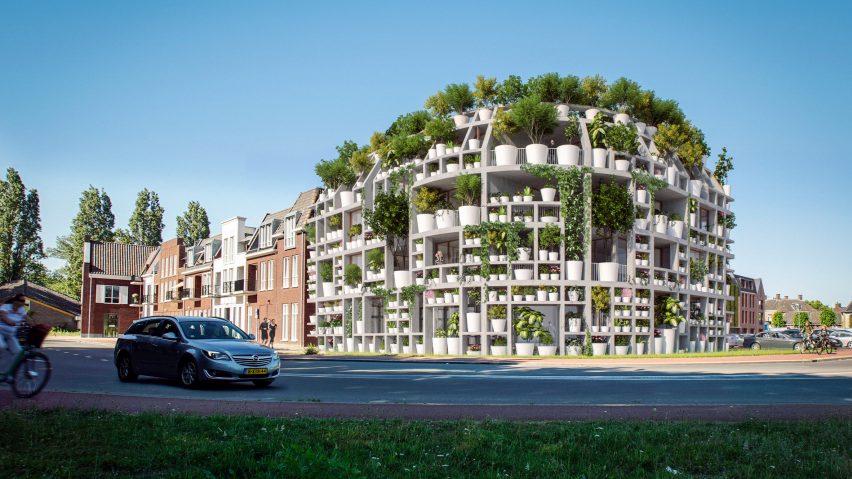
Other popular projects this week include Google Maps' Live View AR walking directions, MVRDV's designs for a residential development in the Netherlands covered in plant pots, and a London housing extension by Rise Design Studio complete with window reading nooks.
